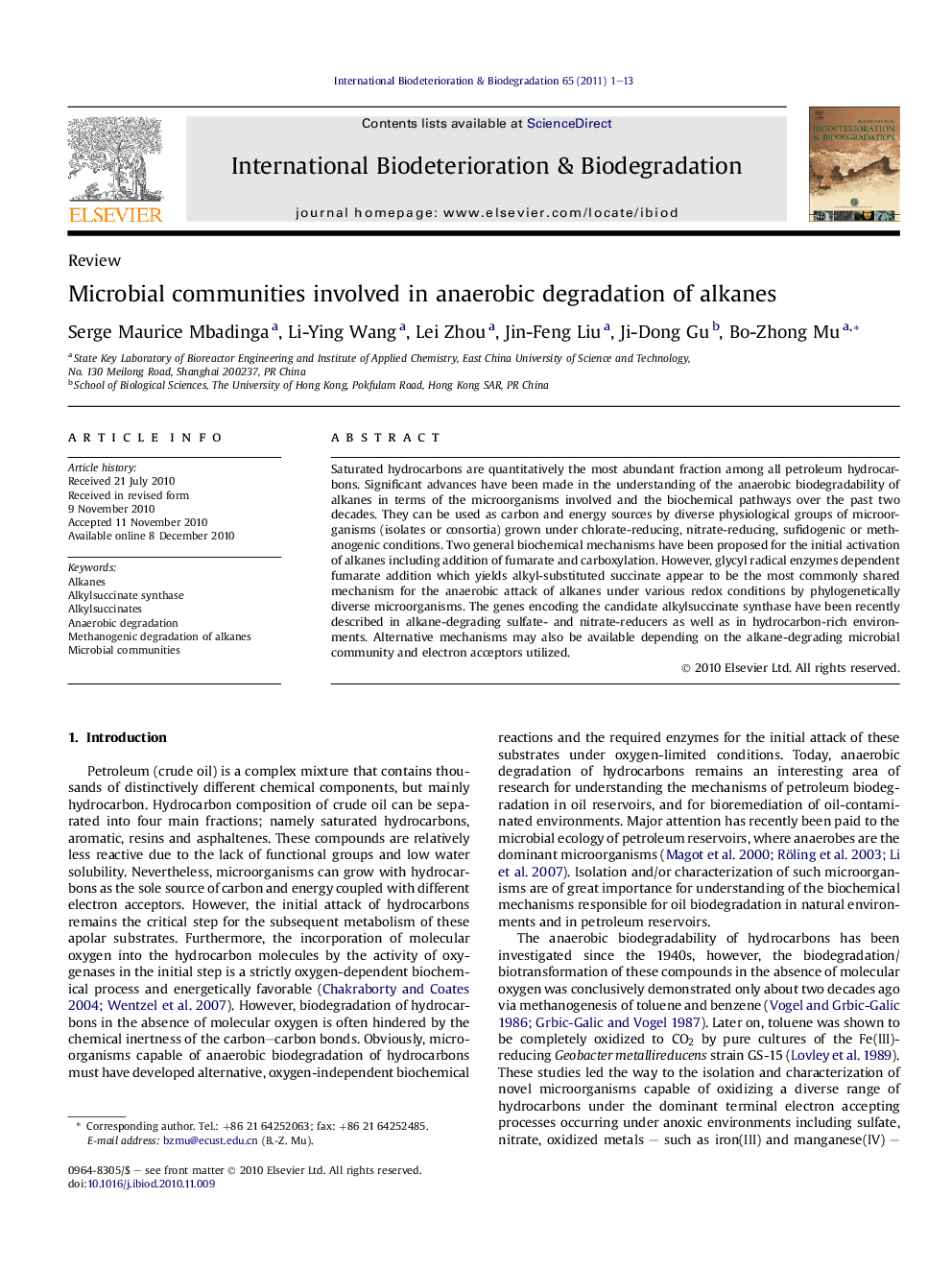| کد مقاله | کد نشریه | سال انتشار | مقاله انگلیسی | نسخه تمام متن |
|---|---|---|---|---|
| 6289551 | 1301765 | 2011 | 13 صفحه PDF | دانلود رایگان |

Saturated hydrocarbons are quantitatively the most abundant fraction among all petroleum hydrocarbons. Significant advances have been made in the understanding of the anaerobic biodegradability of alkanes in terms of the microorganisms involved and the biochemical pathways over the past two decades. They can be used as carbon and energy sources by diverse physiological groups of microorganisms (isolates or consortia) grown under chlorate-reducing, nitrate-reducing, sufidogenic or methanogenic conditions. Two general biochemical mechanisms have been proposed for the initial activation of alkanes including addition of fumarate and carboxylation. However, glycyl radical enzymes dependent fumarate addition which yields alkyl-substituted succinate appear to be the most commonly shared mechanism for the anaerobic attack of alkanes under various redox conditions by phylogenetically diverse microorganisms. The genes encoding the candidate alkylsuccinate synthase have been recently described in alkane-degrading sulfate- and nitrate-reducers as well as in hydrocarbon-rich environments. Alternative mechanisms may also be available depending on the alkane-degrading microbial community and electron acceptors utilized.
Journal: International Biodeterioration & Biodegradation - Volume 65, Issue 1, January 2011, Pages 1-13